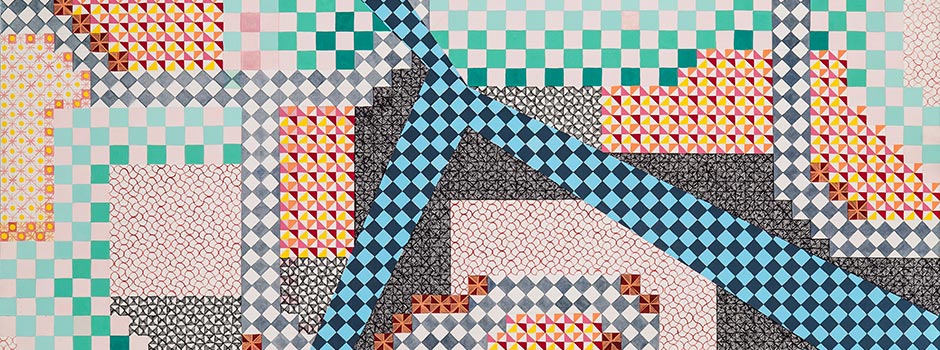
Solo show at Gallery Isabelle van den Eynde, Dubai (12 May – 26 July) Nargess Hashemi: I will build a tall city interconnected by cul-de-sacs
Jun 11, 2018 Exhibition

Two collection of works come together in this exhibition, encompassing two distanced angles on the same subject of space; large scale urban plans and small scale delicate interiors. We look at the cross sections of urban environments showing us how we could interconnect, while moving in-between crochet curtains that separate us without dividing us.
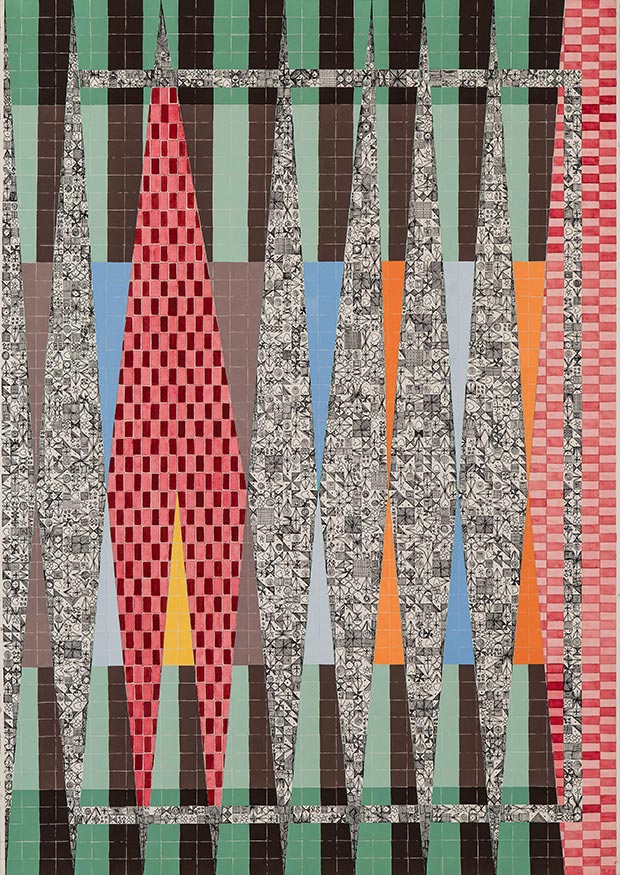 Nargess Hashemi, Satellite View from 500 m - Housing Complex for Crafts People and the Research of Handicraft, 2017. Pen, pencil and gouache on cotton paper, 100 x 70 cm / Courtesy of the artist and Gallery Isabelle van den Eynde
Nargess Hashemi, Satellite View from 500 m - Housing Complex for Crafts People and the Research of Handicraft, 2017. Pen, pencil and gouache on cotton paper, 100 x 70 cm / Courtesy of the artist and Gallery Isabelle van den Eynde
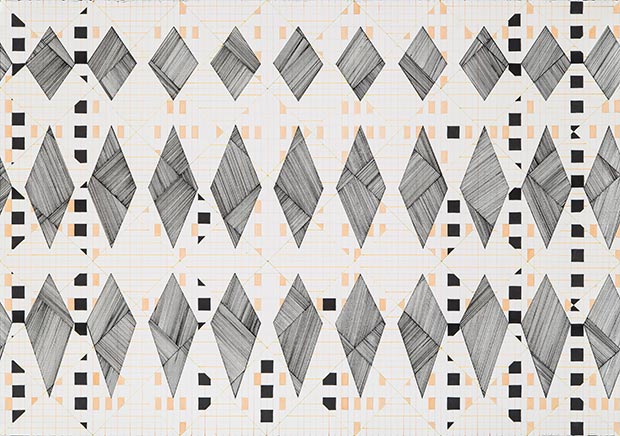 Nargess Hashemi, Satellite View from 100 m - Housing Complex for Builders of the Mathematics City, 2018. Pen, pencil and gouache on cotton paper, 70 x 100 cm / Courtesy of the artist and Gallery Isabelle van den Eynde
Nargess Hashemi, Satellite View from 100 m - Housing Complex for Builders of the Mathematics City, 2018. Pen, pencil and gouache on cotton paper, 70 x 100 cm / Courtesy of the artist and Gallery Isabelle van den Eynde
In the diamond, square and triangle-shaped urban plans and unsymmetrically organised spaces, Hashemi reimagines our homes, offices and cultural centres. Domes become social and medical services, and places are no longer connected by roads, but by interconnected diamond shaped cul-de-sacs, that allow for bodies to gather but not cars. Colours become representative of different functions such as solar energy facilities, green spaces and waterways, being some of them. There are big black spaces scattered across all drawings; large voids amongst buildings, only bridged and connected in limited places. In the midst of all this there are squares filled with hearts, cross hatches and stars, representing lively homes with different inhabitants. These homes - much like the interior of the gallery - are sectioned by communally made crochet pieces, hanging like curtains from the ceiling and spreading out of walls or rising from the floor. They become delicate partitions that separate two spaces without fully concealing them from one another; embracing one without suffocating the other and shielding without hiding anything from it. These works are handmade by a community of women and bring a colourful and protective feel to these future homes. (Text by Mandana Mohit) Nargess Hashemi (born 1979, Tehran) lives and works in Tehran. Hashemi’s works are intimate observations of the dualities that permeate her daily life in Iran by using a diverse range of techniques and materials including monoprinting, macramé, graph paper and acetate. Her style is continuously evolving, from her largely figurative works depicting intimate, domestic and celebratory scenes, to her most recent works in which she uses graph paper to experiment with more abstract, geometric compositions. Central themes of the artist’s work remain her preoccupation with the familial routines and habits that she grew up with. These elements are evident in her works and reflect a conflicted sense of belonging and detachment, nostalgia and uneasiness, comfort and entrapment, all at the same time. The use of pattern is another dominant element in Hashemi’s work. From the kitschy wrapping paper used as the background in her 'Wrap Me Up in You' series, to the complex bands of repetitive, brightly coloured shapes occupying the minute 1 mm x 1 mm squares of graph paper in her Home and Carpet series, she uses pattern in its many varying forms as both literal and abstract manifestations of the influence of environment and tradition. In her latest works on paper and canvas along with her crocheted macramés, Hashemi investigates her ideas within spatial planning, reimagining architecture and networks with unthinkable freedom. Hashemi grew up in a traditional Iranian household and studied Ancient Persian at the Neyshabour Institute and Fine Art at Tehran University. She has had numerous solo shows in her home town. She has also participated in Iranian Spring (2004) at the Tehran Museum of Contemporary Art, she was part of a USA touring group show, entitled 'Wishes and Dreams: Iran’s New Generation Emerges' (2007) and 'The Language of Human Consciousness', Athr Gallery, Jeddah (2014). In 2017, she participated in the Guggenheim Abu Dhabi exhibition 'The Creative Act' as part of the multi-room installation by Ramin Haerizadeh, Rokni Haerizadeh and Hesam Rahmanian. In 2018 she was part of Bread and Salt’s touring exhibition in Italy entitled 'Good Morning ….Good Night!'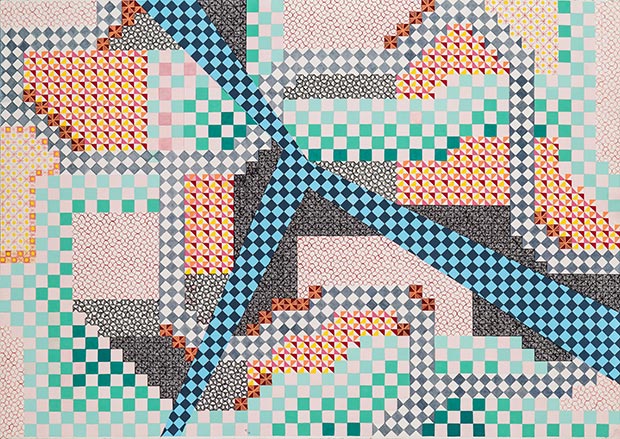 Nargess Hashemi, Satellite View from 500 m - Cultural City for the Less Privileged, 2018. Pen, pencil and gouache on cotton paper, 70 x 100 cm / Courtesy of the artist and Gallery Isabelle van den Eynde
Nargess Hashemi, Satellite View from 500 m - Cultural City for the Less Privileged, 2018. Pen, pencil and gouache on cotton paper, 70 x 100 cm / Courtesy of the artist and Gallery Isabelle van den Eynde
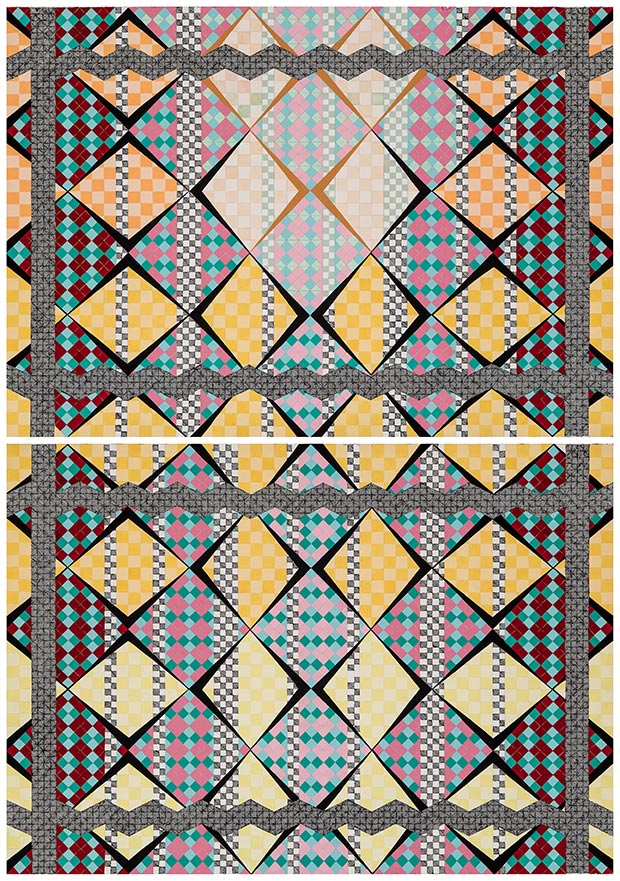 Nargess Hashemi, Satellite View from 500 m - Housing Complex for Plastic Waste Collectors, 2017. Pen, pencil and gouache on cotton paper. Diptych: 70 x 100 cm each Overall 140 x 100 cm / Courtesy of the artist and Gallery Isabelle van den Eynde
Nargess Hashemi, Satellite View from 500 m - Housing Complex for Plastic Waste Collectors, 2017. Pen, pencil and gouache on cotton paper. Diptych: 70 x 100 cm each Overall 140 x 100 cm / Courtesy of the artist and Gallery Isabelle van den Eynde
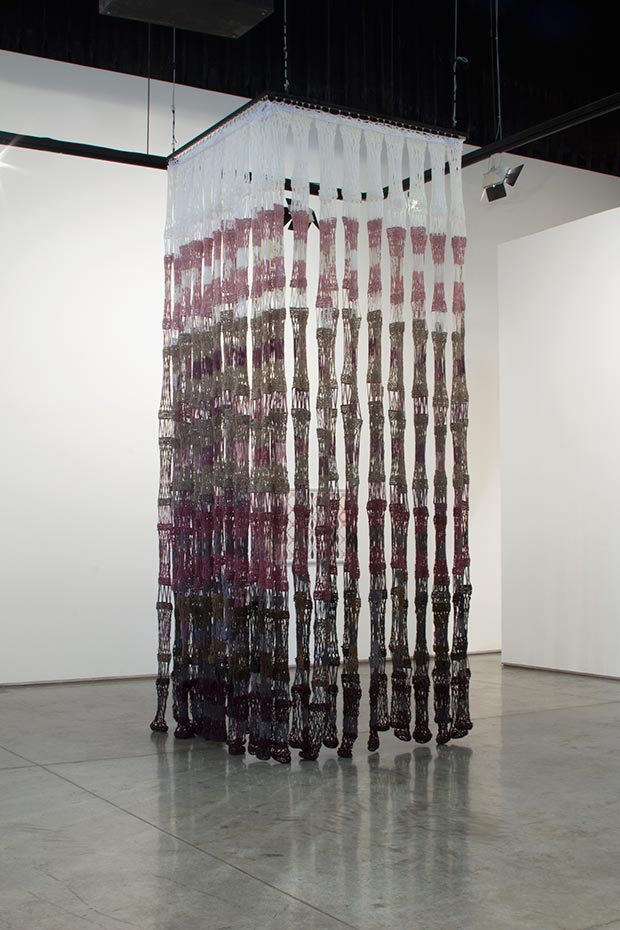 Nargess Hashemi, Breathing House, 2017. Wool yarn crochet, 400 x 320 cm (approx) / Courtesy of the artist and Gallery Isabelle van den Eynde
Nargess Hashemi, Breathing House, 2017. Wool yarn crochet, 400 x 320 cm (approx) / Courtesy of the artist and Gallery Isabelle van den Eynde
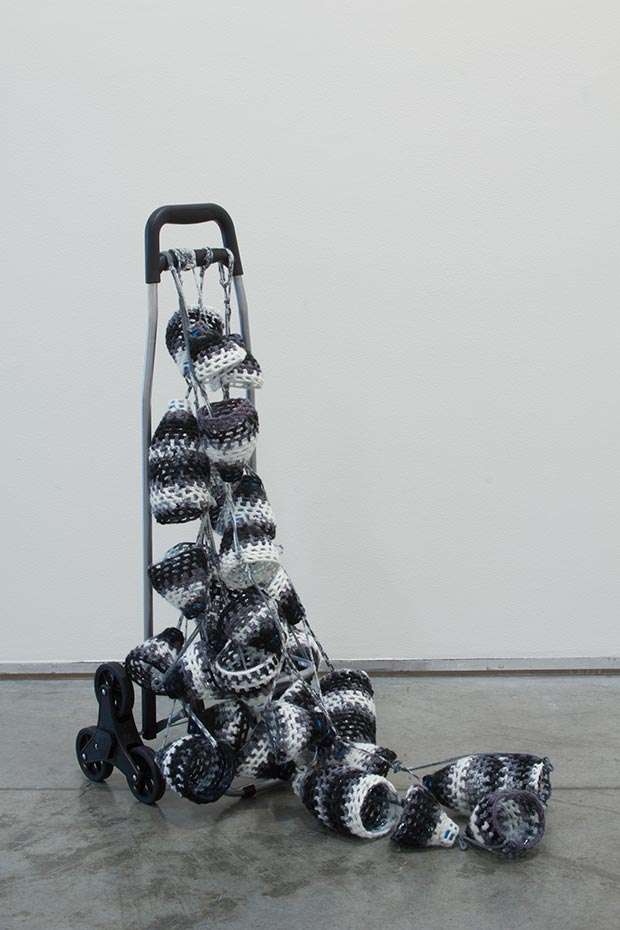 Nargess Hashemi, Breathing House, 2018. Shopping trolley, plastic bottle and wool yarn crochet, 100 x 40 x variable length / Courtesy of the artist and Gallery Isabelle van den Eynde
Nargess Hashemi, Breathing House, 2018. Shopping trolley, plastic bottle and wool yarn crochet, 100 x 40 x variable length / Courtesy of the artist and Gallery Isabelle van den Eynde Nargess Hashemi, I will build a tall city interconnected by cul-de-sacs, Installation view / Courtesy of Gallery Isabelle van den Eynde
Nargess Hashemi, I will build a tall city interconnected by cul-de-sacs, Installation view / Courtesy of Gallery Isabelle van den Eynde
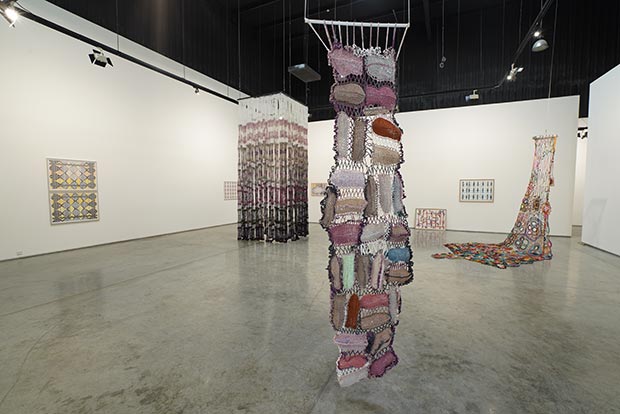 Nargess Hashemi, I will build a tall city interconnected by cul-de-sacs, Installation view / Courtesy of Gallery Isabelle van den Eynde
Nargess Hashemi, I will build a tall city interconnected by cul-de-sacs, Installation view / Courtesy of Gallery Isabelle van den Eynde
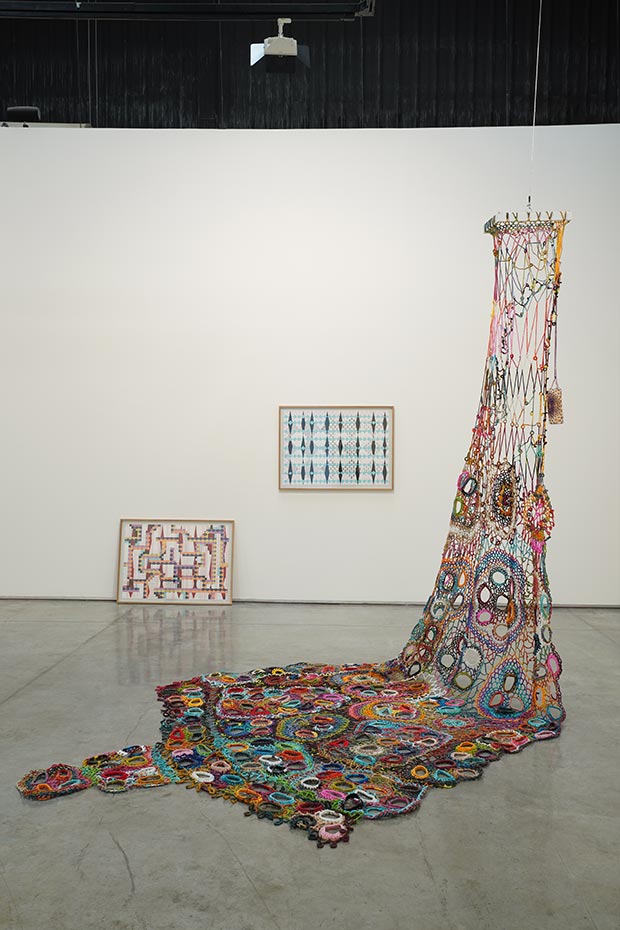 Nargess Hashemi, I will build a tall city interconnected by cul-de-sacs, Installation view / Courtesy of Gallery Isabelle van den Eynde
Nargess Hashemi, I will build a tall city interconnected by cul-de-sacs, Installation view / Courtesy of Gallery Isabelle van den Eynde
 Nargess Hashemi, I will build a tall city interconnected by cul-de-sacs, Installation view / Courtesy of Gallery Isabelle van den Eynde
Nargess Hashemi, I will build a tall city interconnected by cul-de-sacs, Installation view / Courtesy of Gallery Isabelle van den Eynde
Nargess Hashemi
Comments
Add a comment